DISCOVERING LAMPONG PEPPER
Sumatra

We are on our way to the province of Lampong in the South-West of Sumatra, in the Indian ocean. It is the beginning of August in the middle of the dry season and the pepper (Piper nigrum) harvest is coming to an end.
“Lada” means pepper in Indonesian. It is thought that Indian tradesmen introduced the first pepper plants over ten centuries ago throughout the Indian ocean and more specifically to Indonesia in Java and Sumatra.
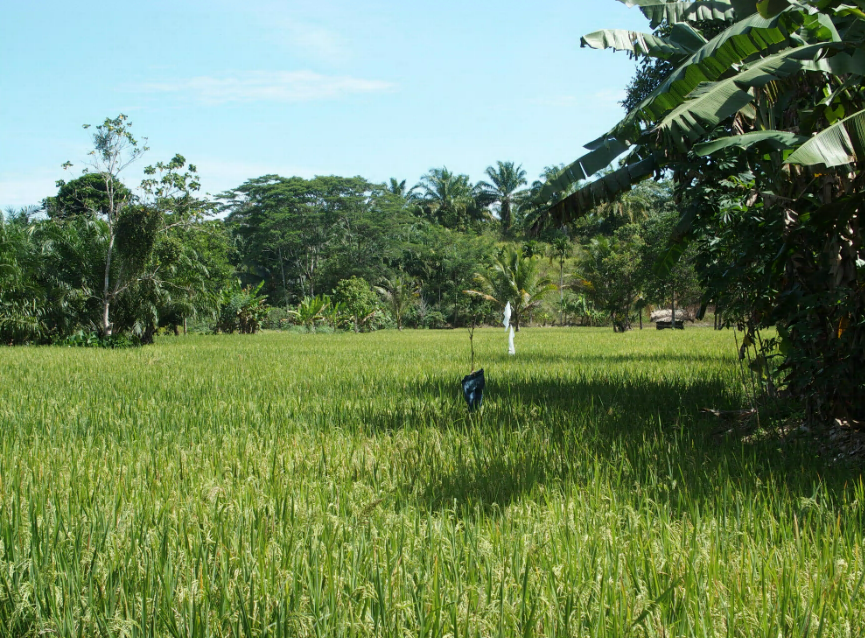
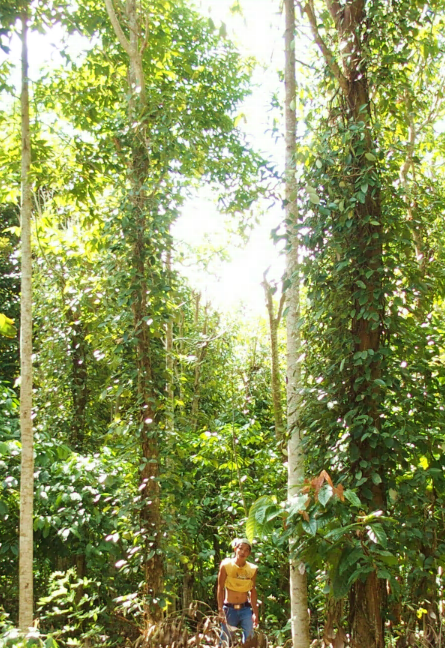
Our local guide, Hayat, has invited us to discover his family’s pepper plantation which is a few kilometres from the town of Krui. We have to walk for about an hour through the tropical forest to get to his plantation. On our way, our imagination runs wild and we hope to bump into the famous Sumatran hairy rhinoceros or the Sumatran tiger.
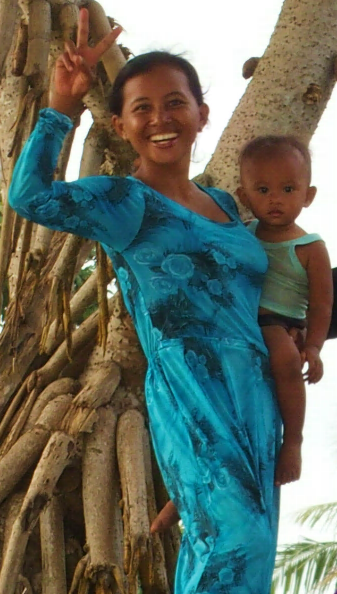
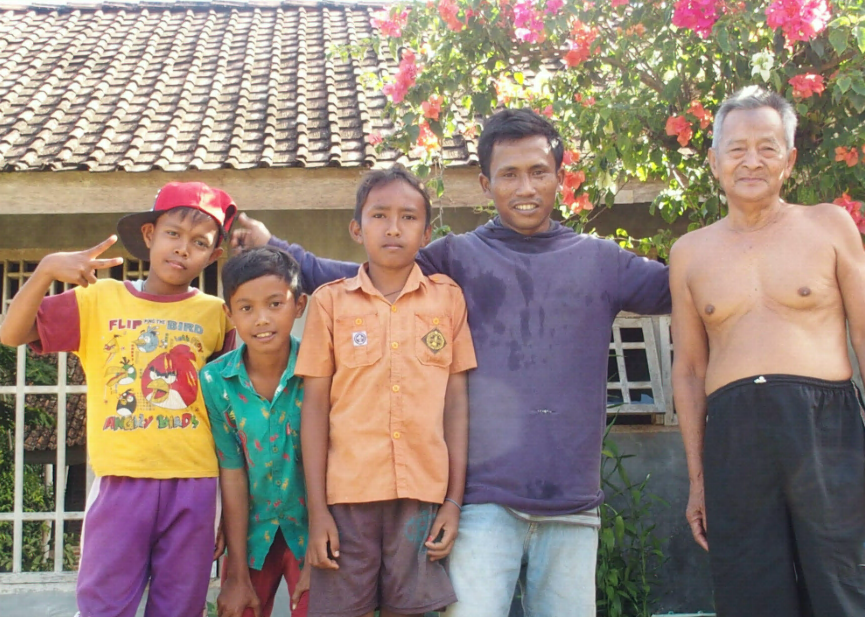
The pepper that is harvested grows in the wild in the heart of the tropical forest, on volcanic soils on the coasts of the Indian ocean. All production stages are done entirely by hand: picking, drying, sorting…
Pepper lovers will delight with the full flavour, powerful spiciness and woody aromas of this pepper. What is astounding at first is the height to which the plants grow, with some reaching up to 7 metres high. These plants are surely several decades old. In the province of Lampong, it is mainly black pepper that is grown as the process is easier than for white pepper which needs lots of water and the required infrastructures (e.g.: soaking tanks).
Once picked, the fresh green pepper is dried in the sun on mats in front of wooden houses. Under the sun, the water in the fresh green peppercorns evaporates. After drying out for 4 or 5 days, the green pepper loses its colour and the first black peppercorns are obtained.
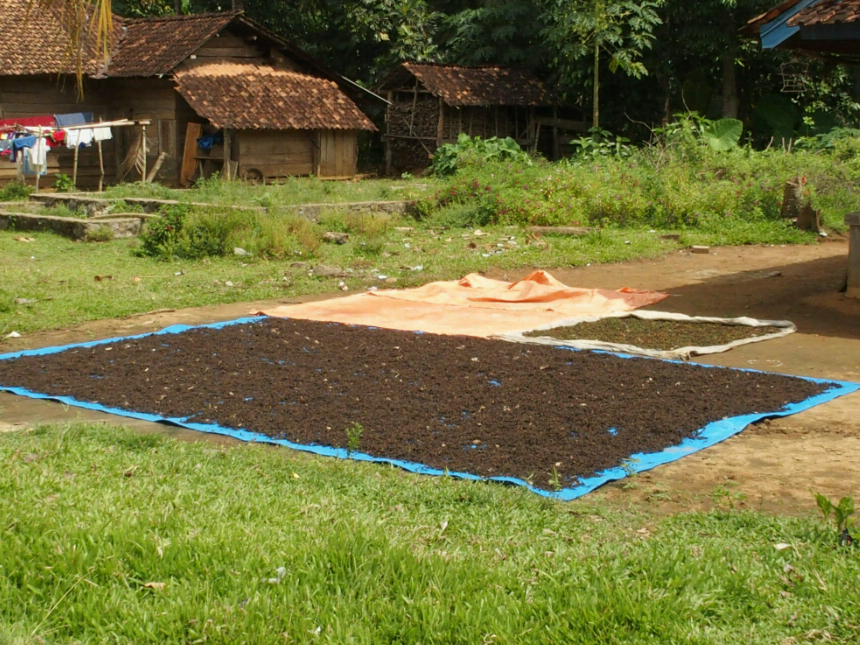
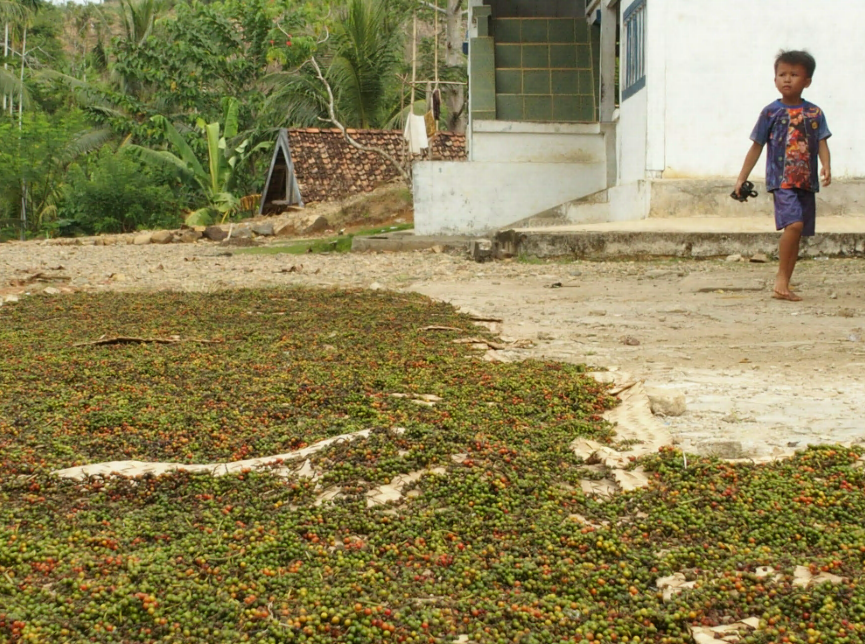
Picking requires expertise

Hayat’s family have been growing pepper and coffee for over three generations. Both are harvested at the same time and it’s not unusal to find coffee cherries in bags of freshly harvested green pepper or on the mats where the pepper is drying out.
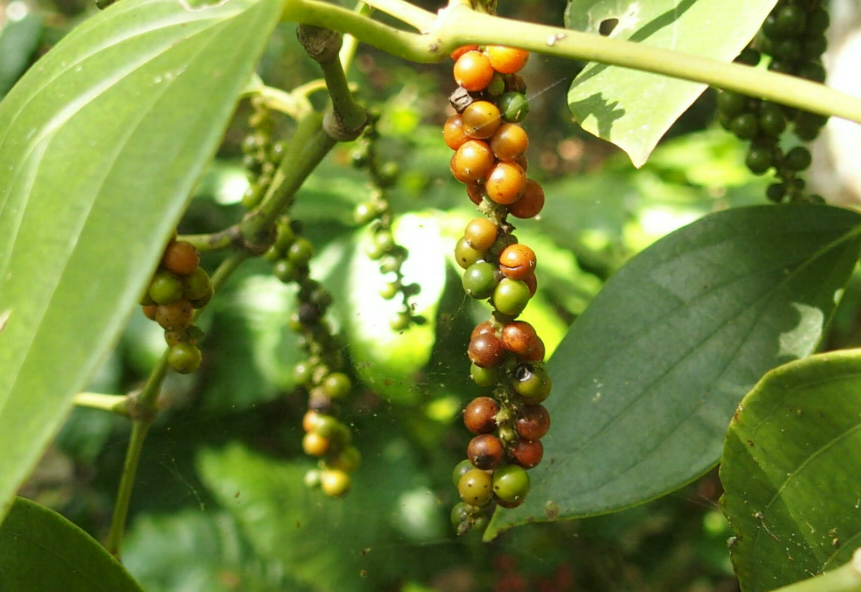
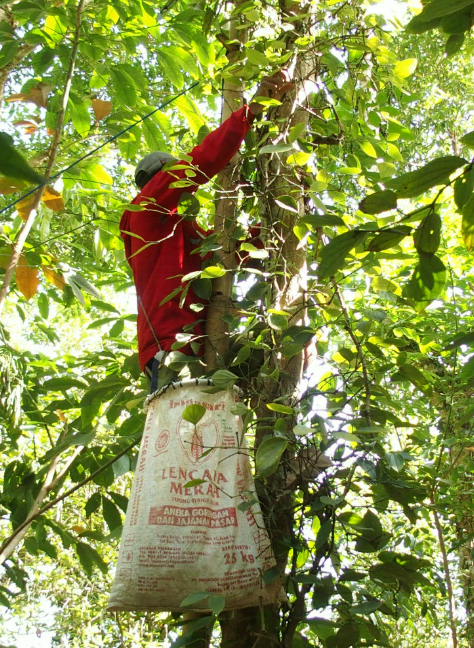
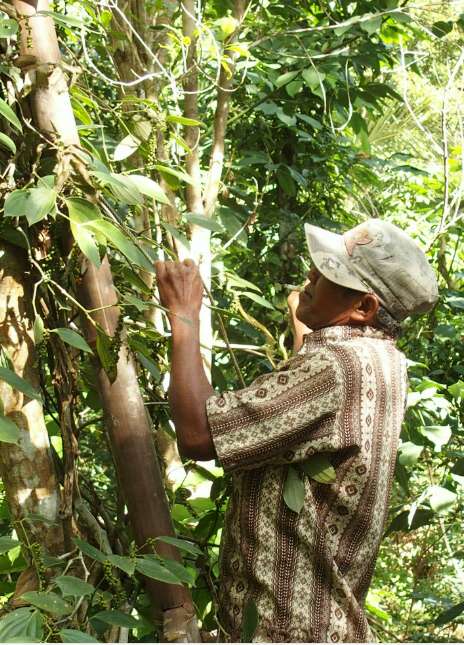
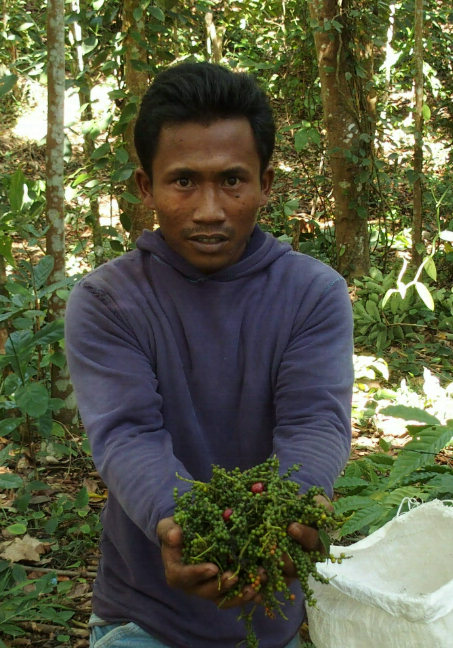
Coffee cherries are used to make the famous “Kopi Luwak” coffee: the most expensive and rarest coffee in the world. “Kopi” means coffee in Indonesian and “Luwak” comes directly from the name of the civet who eats the coffee cherries. The coffee farmers collect the coffee beans that are defecated by the little marten-like animals, then roast them to obtain this grand cru coffee.
Collecting these coffee cherries and fresh green pepper requires true expertise. Hayat explains that the fruit must be harvested when perfectly ripe. To obtain the best quality, he makes sure all the harvesting process is done entirely by hand. He says that he needs to check out the beans several times as only bright red fully ripened cherries and deep green coloured peppercorns will give outstanding scents and aromas.
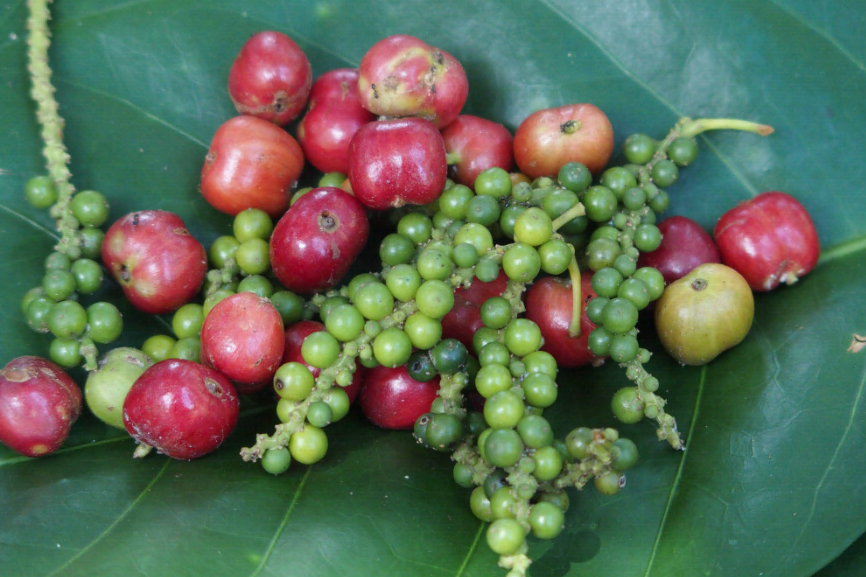
Agro-ecology or agro-forest

Hayat and the other farmers in his district have diversified the plantations around their villages and opted for a agro-ecological system (agro-forest). They have set up a production system based on the possibilities offered by their ecosystem. The coffee trees grow shaded by the pepper plants which benefit from the shade of taller trees and are surronded by rice paddies, banana, papaya and coconut trees. A river runs through the middle of this ecosystem.
Hayat and his farming neighbours believe it is best to use nature to its full potential and get the full capacity from each plant. They prefer not to over exploit the soil and avoid monoculture. They take into account the overall farming of the different plants to increase productivity while preserving the natural resources around them.
This is their way of fighting against massive deforestation which Sumatra suffers from. The Indonesian government authorises the destruction of primary forests to allow for the monoculture of palm oil, to satisfy the strong worldwide demand for palm oil.

RELATED POSTS
 Français
Français 